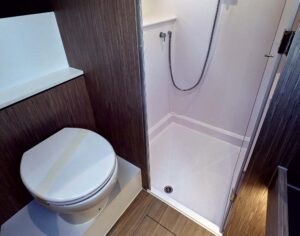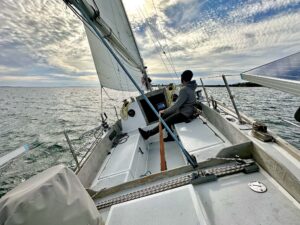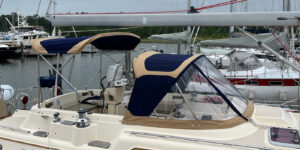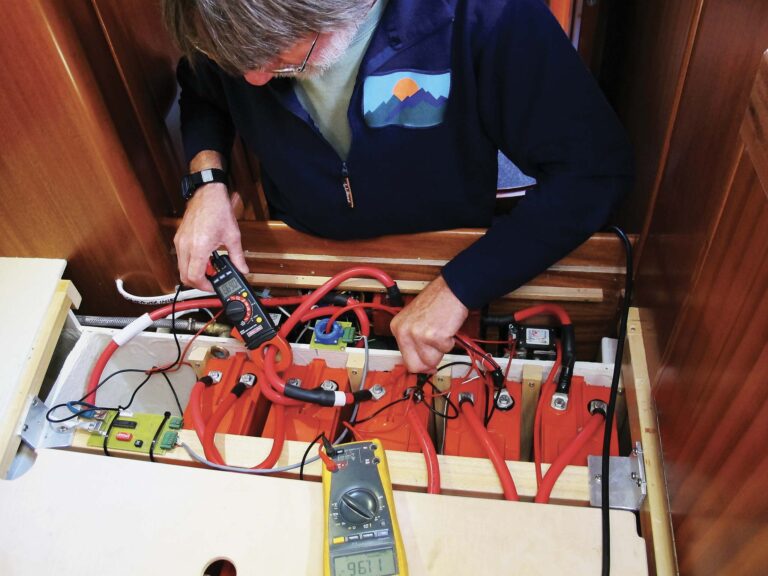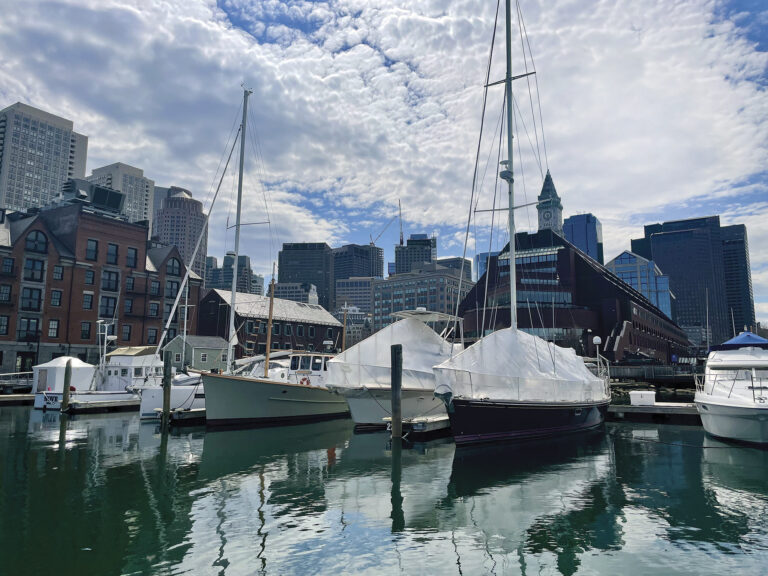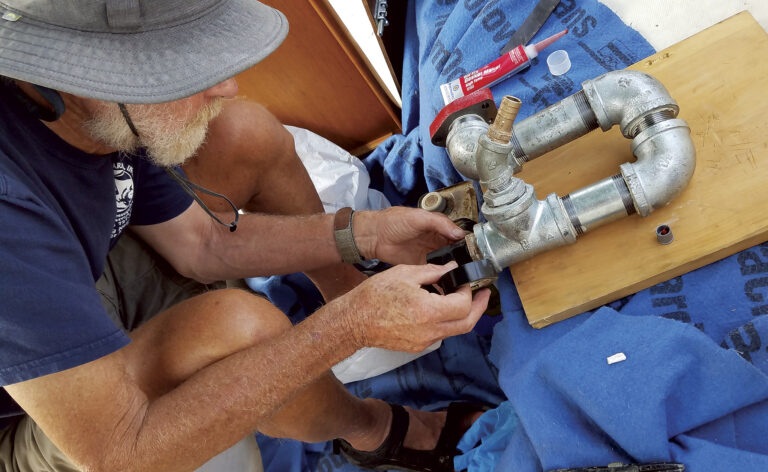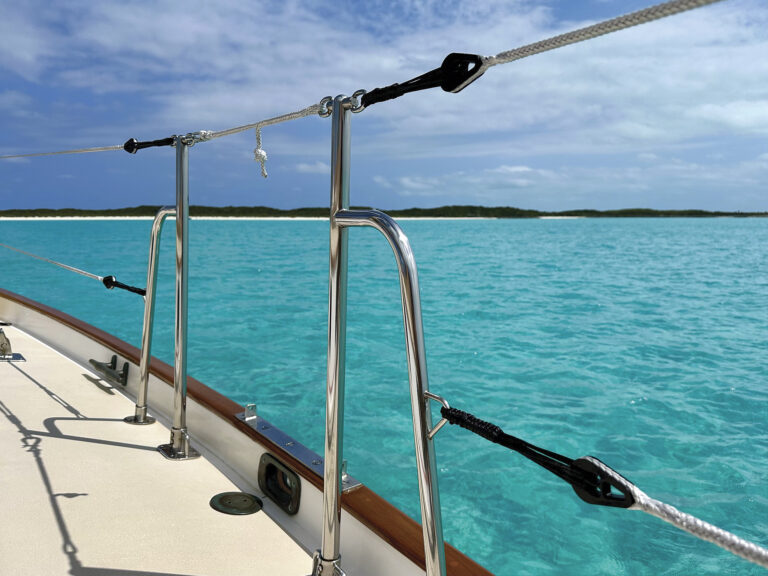“Yachts shall comply with the US SAILING recommendations of OSR 5.11, Preventer or Boom Restraining Device. The boom-restraining device shall be installed and demonstrated at the time of the yacht’s mandatory courtesy inspection. A process and plan for its use shall be part of the crew’s training and practice.”
This paragraph, from the Notice of Race; Special Requirements for the 2008 Newport Bermuda Race, means that the humble boom preventer is now a recognized safety device for racers. Cruisers, of course, have long been aware of the merits of preventing the boom (and mainsheet) from scything across the cockpit during an unintentional gybe.
It’s an interesting move from race cosponsor Cruising Club of America (CCA). Racing boats tend to have experienced and alert people on the helm at all times; the same cannot be said for cruising boats, which are often sailed shorthanded or with greenhorns on board. Many racers will argue that in the event of a wild broach under spinnaker, it is less dangerous to have the boom slam across the cockpit than to have it pin the boat down until it can be freed. On the other hand, it’s standard practice for many cruising sailors to rig a preventer any time they are sailing lower than a beam reach, sometimes earlier if the boom is banging around in light winds and sloppy seas. If you adopt the maxim that prevention is better than a cure, you won’t go far wrong.
END-BOOM OR MID-BOOM?
Though there are assorted variations on the preventer theme, there are only two basic ways to set up a preventer—either run a line from the end of the boom to a block somewhere on the foredeck and then back to the cockpit, or run the line from around mid-boom to a block just abaft the chainplates, then run it aft. Each method has its advocates.
Mid-boom The preventer is fastened about a third of the way back from the gooseneck, or around the point where the boomvang is fixed. The preventer line can be fastened to an eye under the boom or to a fabric strop that is passed around the boom, or it can be wrapped twice around the boom and tied off. The line is typically led inboard of the lifelines through a snatch block clipped to the toerail or to a padeye, and then back to a cleat or winch in the cockpit. Another way is to rig a tackle between the boom and the toerail or a strong padeye on the deck (well mounted with a solid backing plate), either leading the tail aft or securing it with a camcleat on the lower block. Often these tackles are almost permanently rigged on boats that do not have dedicated boomvangs.
If you rig two preventer lines, one on each side of the boat, you won’t need to leave the cockpit while gybing or tacking. Many sailors recommend using nylon line for the preventer, as its stretch will absorb a certain amount of shock loading. Since it stretches more when wet, it may have to be led to a winch. Otherwise, use inexpensive braided or three-strand polyester. I’ve used polyester preventer lines (usually old halyards) for years with no problems.
End-boom Should the squared-off boom dip into the water while running in a big blow and heavy seas, it might break where the mid-boom preventer is attached. This is why many ocean sailors like to rig their preventers from the end of the boom to a point well forward of the mast, then back to a point in the cockpit where it can be easily released or tensioned. At its simplest, the end-boom preventer is a single length of line, but there are other ways of rigging it. One option is to rig permanent pendants on either side of the boom, with snapshackles that keep them in place when not in use. The leeward pendant is clipped to a loop in the end of a preventer line. If you rig preventer lines port and starboard, and run them forward through blocks secured to both toerails abaft the bow pulpit and back to the cockpit, you can gybe without anyone having to go to the foredeck to relead a line.
Pros and Cons Offshore and running hard in big seas, I would be inclined to set up an end-boom preventer. But many modern cruising and racing boats have aft-swept spreaders that make it impossible to square the boom off. On some boats the boom can’t be eased to more than a 60-degree angle from the centerline. Combined with the typical high topsides of most modern cruising boats, this makes it unlikely that the boat will drag its boom in the water except in the most extreme conditions. If the boat has a loose-footed mainsail that won’t trap water, even the odd dip probably won’t cause too much harm. And if you’re still worried, you can leave the preventer slack enough that it won’t become taut until the boom is 20 to 30 degrees off the centerline—and make sure you can uncleat it quickly.
Having used both types of preventer, I believe that, for most sailors, a mid-boom preventer is the better option for virtually any sailing scenario short of a full gale. The easier something is to rig and use, the more likely you are to actually rig it and use it, and this is as true of preventers as anything else.
Boom brakes If you’re looking for a neater solution, you could consider one of the proprietary boom brakes, such as those made by Dutchman, Walder, and Wichard. They use friction to control the speed at which the boom moves across the boat, and most of them can be adjusted progressively to let the boom move freely, slow its movement, or hold it firmly in place. Once set up, they are self-tending. These are more expensive than a simple line-and-block preventer, and, since they’re typically a permanent installation, there are always lines running across the deck. On the other hand, they offer considerable peace of mind, especially in crowded waters where constant maneuvering might make it unfeasible to rig a preventer.
FIGURE 1 End-boom preventers are often rigged when running in big seas or when there is a risk of broaching and dipping the boom in the water. A good way to set up an end-boom preventer is to fix one line (pendant) on either side of the boom, with snapshackles at their forward ends (C). The leeward pendant is clipped to a loop in the end of the preventer line (A) running through a snatch block that’s either clipped to the toerail near the bow (B) or, if the boom is high enough for the preventer line to clear the lifelines, to a padeye on the foredeck (this avoids the need to relead the line when you gybe and allows the block to be left in place—you just unclip the preventer line, pass it around the front of the mast, and clip it to the new leeward pendant). The preventer line is led aft to a winch or clutch by the cockpit, either to leeward or to weather (D). Make sure it can be released under load.
FIGURE 2 Most cruisers opt for a simpler way of rigging a preventer. It’s easy to lead a line or tackle from a point between one-third and halfway along the boom to a block just abaft the shrouds (A) and then back to the cockpit. In addition to preventing the boom from crash-gybing, it acts as a vang and will do an excellent job of keeping the boom quiet while reaching or sailing in sloppy seas and light air. If you’re worried about the boom fracturing or bending at the point where the preventer is fastened, it may be a good idea to rig a bridle (B) between the ends of the boom; you’ll need to experiment to find the ideal location for the bridle eye.
FIGURE 3 Here’s a good setup for cruising boats that can be left permanently rigged on passage. Preventer lines on either side of the boom are run through blocks abaft the shrouds and inboard of the lifelines (so you don’t bend stanchions during a gybe) and are then led aft to winches or clutches. This setup gives excellent control over the boom.


